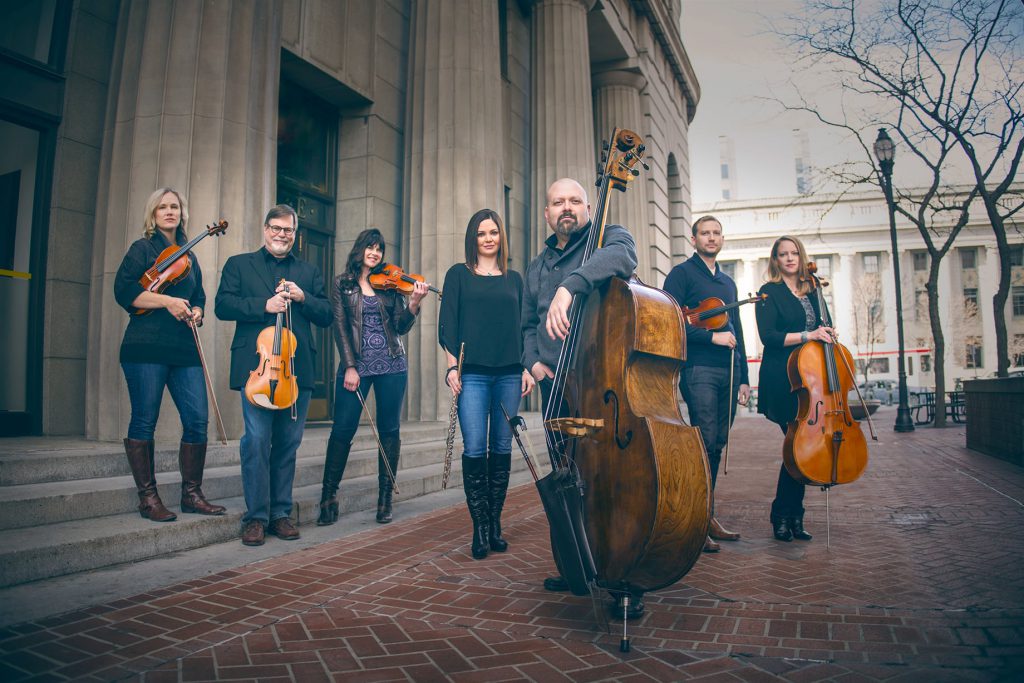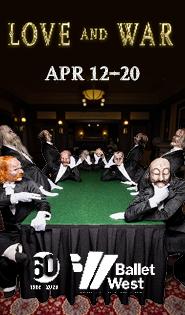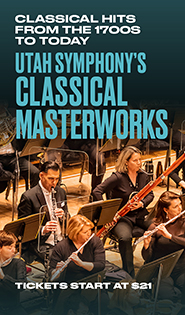Sinfonia Salt Lake offers compelling contemporary program

Sinfonia Salt Lake performed Monday night at First United Methodist Church. Photo: Hannah Galli
Sinfonia Salt Lake plays a wide-ranging spectrum of music each season, yet promoting contemporary music is the major part of its mission. Since its founding four years ago the ensemble has programmed several new works by Utah composers.
Monday’s concert in the First United Methodist Church downtown featured four works by composers that have a Utah connection. Each was quite distinctive stylistically, and the diversity of the pieces underscored that “contemporary” music is indeed a broad concept. Each work proved compelling in its own way and all received solid performances under the baton of guest conductor Conner Covington, associate conductor of the Utah Symphony.
The program opened with Stacy Garrop’s Postcards from Wyoming. Commissioned for Sinfonia Salt Lake, the three-movement work was premiered by the group at the Utah Arts Festival in 2017.
The Chicago-based composer makes good use of the instruments (violin, cello, flute, clarinet, piano and percussion) to create colorful and vivid imagery. The first and last movements (“High Plains Prairie” and “The Solitude of Stars”) are wonderfully atmospheric, with special effects in the instruments creating an aura of mystique and awe.
Garrop captures the bleakness of the wide open Wyoming plains in the opening movement with fragments of motives that eventually grow into more long drawn-out melodies in the middle section before evoking the opening once again, briefly, to close out the movement. The third movement graphically depicts the vastness of space with disjointed fragments thrown about the instruments.
The middle movement, “Call of the Wild,” is, simply put, just that. The players cut loose in frenzied play that is strident but never dissonant. The drums are spotlighted in this movement and percussionist Stephen Hughes provided a top-notch performance.
Devin Maxwell’s Cloudseeding 6, a concerto for contrabass and chamber orchestra, was a commission by the Salty Cricket Composers Collective to celebrate its 10th anniversary. Maxwell, a faculty member at the University of Utah, wrote a bold work that exploits the bass’s potential for musical and sonic effects. Bassist Denson Angulo gave a compelling performance that put his considerable musicality and technical facility on full display. He was ably supported by the ensemble under Covington’s skillful direction.
While the second movement is built around repetitive fragments that never actually develop, the opening movement is by far the more varied and interesting. Trying to recreate the sounds of a squeaky pew, Maxwell cleverly opens the movement with the bass moving incessantly between its extreme upper range and its lowest open string. This effect is “creaky” and very descriptive. From there, the music moves on to more sustained string sounds from the soloist and the ensemble, but special effects are never far from the core of the material Maxwell so colorfully develops.
Mary Lou Prince’s haunting Topaz for harp and strings led off the second half. Originally conceived for the Japanese koto and string quartet, this new arrangement works surprisingly well. While the harp’s lushness is diametrically opposite the koto’s distinctive brittle sound, it was a credible substitute, and Prince even found ways to bend some of the harp notes in an Eastern fashion.
Topaz is the name of the interment camp in Utah’s west desert that housed thousands of Japanese-Americans during World War II, and Prince’s work is based on a young woman’s recollections of life in the camp. The composer is masterful in conjuring up images and she knows how to tell a compelling story in music, conveying the narrative’s powerful emotions.
There is a fine thread of bittersweet feeling that pervade most of the six movements of Topaz., at times moving into longing, sadness and occasionally a sense of hopelessness, specifically in “Sunday Morning” and “Paris Dreaming.” But the work ends positively when the inhabitants are freed and allowed to return to their homes in the closing “Leaving Topaz.”
Harpist Elizabeth Clark played with tender lyricism that emphasized the wealth of emotions at play, and Covington elicited equally expressive playing from his string ensemble. This emotional performances went to the heart of the music.
The evening ended with Henry Wolking’s jazzy Gone Playin’ for clarinet and strings. Wolking, a now-retired professor of music at the University of Utah, is equally at home in jazz and classical styles and much of his music reflects those varied influences.
Gone Playin’ is a carefree three-movement work that is lively and robust in the first movement, “Gone Fishin’: Whirling Trout.” A more smooth and languid expression follows in“Gone Sleepin’: Jazz Lullaby” and the suite closes in crisp, rhythmically vibrant fashion in “Gone Dancin’.”
Clarinetist Henry Caceres gave a dynamic account that captured the spirit and character of each movement with lucid expressions and witty charm. Covington once again led the strings in nuanced, finely crafted playing.

